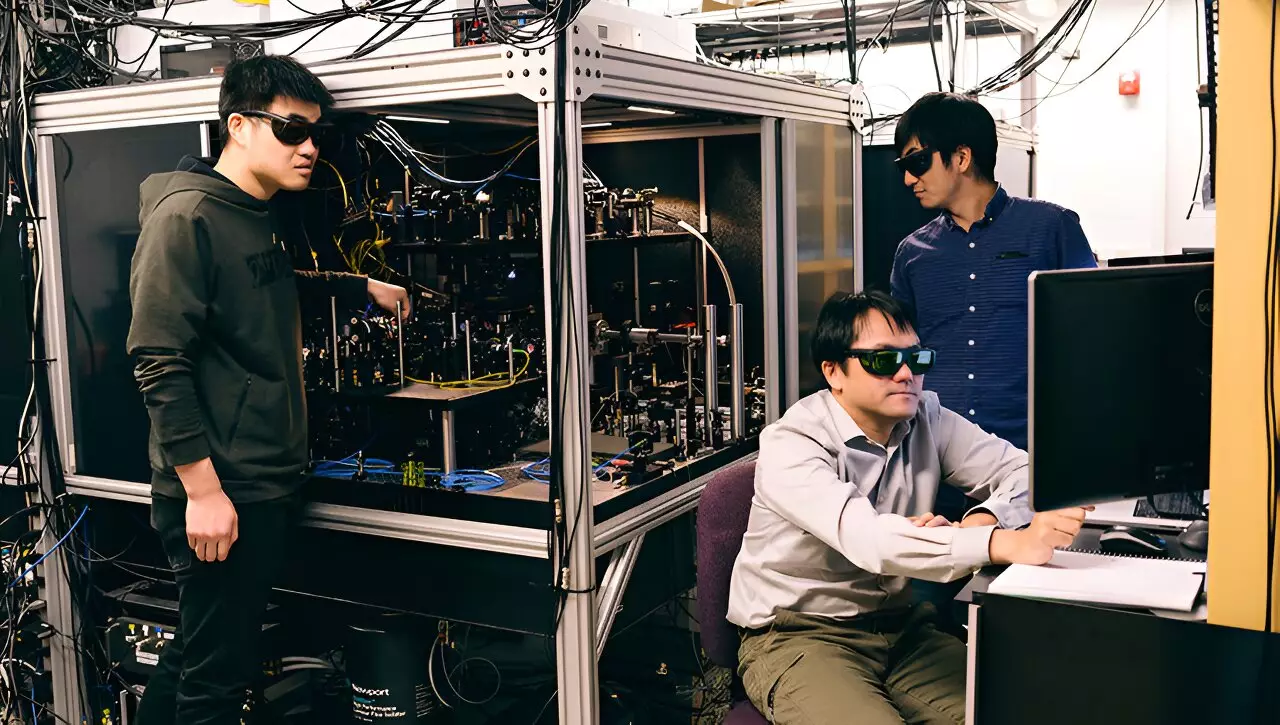In a groundbreaking discovery, researchers at Purdue University have achieved the trapping of alkali atoms, specifically cesium, on an integrated photonic circuit. This innovative approach mimics the functionality of traditional electronic transistors, but for photons – the smallest units of light. This breakthrough paves the way for the development of quantum networks based on cold-atom integrated nanophotonic circuits.
Led by Chen-Lung Hung, an associate professor of physics and astronomy at Purdue University, the research team utilized lasers to cool and tightly trap atoms on a nanophotonic circuit. These trapped atoms are chilled to an incredibly cold temperature, just above absolute zero, and are essentially immobilized. By employing a “tractor beam” directed at the photonic waveguide, the atoms are positioned at a distance shorter than the wavelength of light, enabling them to efficiently interact with confined photons.
A critical aspect demonstrated in this research is the use of atom-coupled microring resonators as “transistors” for photons. By manipulating the state of the atoms, the flow of light through the circuit can be controlled. This control mechanism allows for the transmission of photons when the atoms are in the correct state, while blocking them entirely in an alternate state. The efficiency of this gating process is directly proportional to the degree of interaction between the atoms and photons.
The integration of atoms into photonic circuits opens up a realm of possibilities for exploring new collective light-matter interactions and quantum phenomena. Unlike solid-state emitters, cold atoms offer a level of uniformity that enables the buildup of phase coherence, facilitating stronger interactions with photons. This unique system can be leveraged to study emergent collective effects and pave the way for distributed quantum computing based on neutral atoms.
The fusion of quantum principles with integrated photonic circuits presents a myriad of potential applications. From quantum information storage and manipulation to the realization of quantum networks, this research sets the stage for transformative advancements in the field of quantum technology. The team’s relentless pursuit of innovation and exploration of new research avenues bodes well for the future of cold-atom integrated nanophotonic circuits.
The achievement of trapping atoms on an integrated photonic circuit marks a significant milestone in the realm of quantum technology. The implications of this research are vast, ranging from quantum computing to fundamental studies of light-matter interactions. As the team continues to break new ground and uncover the potential of cold-atom integration, the possibilities for the future of quantum networks appear limitless.


Leave a Reply